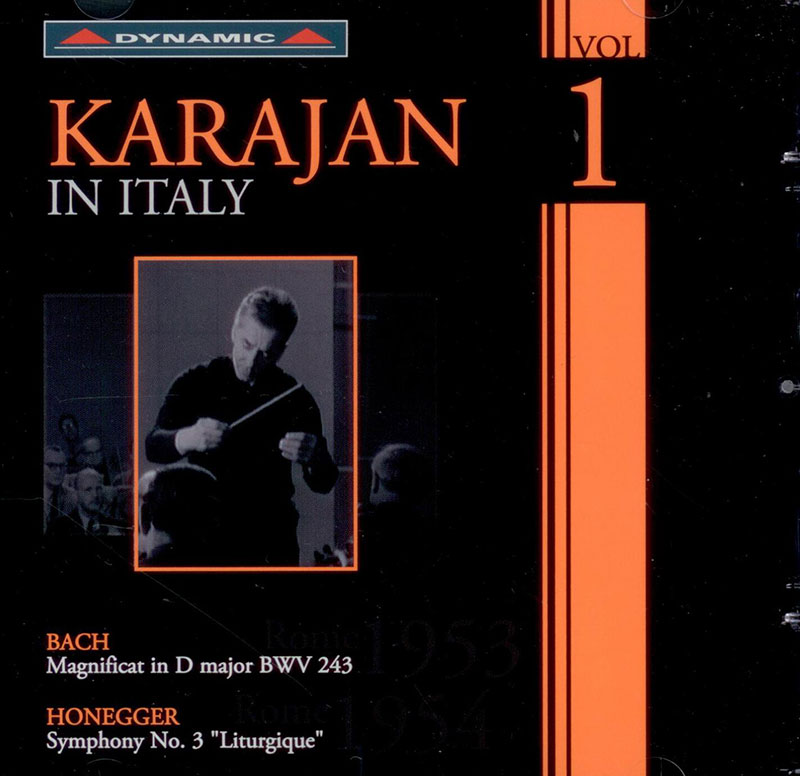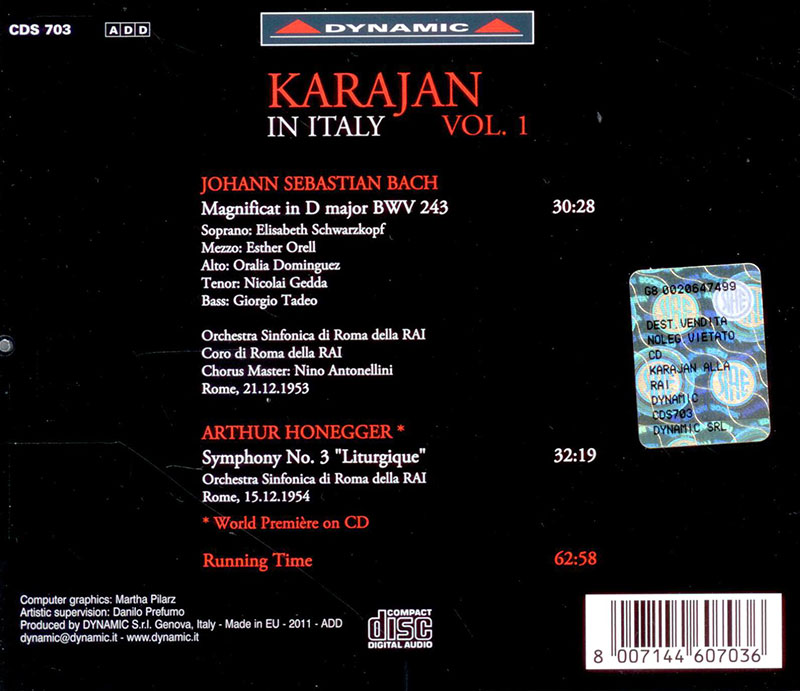Logowanie
Mikołaj - ten to ma gest!
Elton John, The Mamas & The Papas, Cat Stevens, Rod Stewart, Bobbie Gentry, Stevie Wonder, Engelbert Humperdinck
Memory Lane
Edycja Numerowana - 1000 egzemplarzy w skali światowej
RACHMANINOV, Eiji Oue, Minnesota Orchestra
Symphonic Dances / Vocalise
Best Recordings of 2001!!! NAJCZĘŚCIEJ KUPOWANA PŁYTA Z RR!
Karnawał czas zacząć!
Music of Love - Hi-Fi Latin Rhythms
Samba : Music of Celebration
AUDIOPHILE 24BIT RECORDING AND MASTERING
CHOPIN, LISZT, DEBUSSY, DVORAK, Gerhard Oppitz
Dances romantiques - A fantastic Notturno
Wzorcowa jakość audiofilska z Clearaudio
Winylowy niezbędnik
ClearAudio
Double Matrix Professional - Sonic
najbardziej inteligentna i skuteczna pralka do płyt winylowych wszelkiego typu - całkowicie automatyczna
BACH, HONEGGER, Orchestra Sinfonica e Coro di Roma della RAI, Herbert von Karajan
Karajan in Italy - Vol.1

- Herbert von Karajan - conductor
- Orchestra Sinfonica e Coro di Roma della RAI - orchestra
- BACH
- HONEGGER
INFORMATION The Magnificat featured here has particular artistic significance as this was the first time Karajan had officially tackled Johann Sebastian Bach’s famous masterpiece. The Magnificat was composed in 1723 for the Christmas vespers in Leipzig, in the key of E flat major; Bach later removed Christmas references from the text so that the piece could be performed throughout the year and changed its key to D major. This version, dating back to 1733, is the one which is generally performed today. The choral part is for five voices and the Magnificat is divided into 12 pieces, many of them very famous, like the initial chorus, a truly spectacular passage pompously introduced by the orchestra, and all the solo arias. The cast shines out with the extraordinary voices of Elizabeth Schwarzkopf, already an international star at the time, and the young Nicolai Gedda, whom Karajan had auditioned just a few months before this concert. The Symphonie Liturgique is the third of Honegger’s five symphonies and it soon became one of the most successful contemporary works. It is divided into three movements, each with a subtitle referring to the Requiem Mass (Dies irae, De profundis clamavi and Dona eis pacem). The composer himself declared: ”I wished to symbolise the reaction of modern man against the wave of barbarity, stupidity, suffering, mechanical life and bureaucracy which assails us... In music I have represented the contrast found in man’s heart between abandonment to the blind forces that hold him in and the instinct for happiness, love of peace, the feeling of refuge in the divine.” Karajan was soon to become a benchmark interpreter of this symphony. Although he had already performed it previously, this is the first official performance.





























